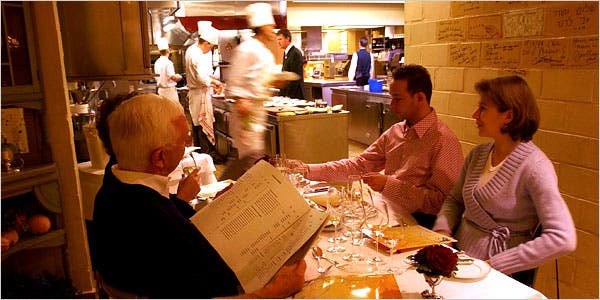Culinary travel offers an adventure into unique gastronomies and exotic tastes. It invites food enthusiasts to explore global kitchens and diverse culinary traditions.
Embracing the flavors of different cultures, culinary travel is a growing trend among those passionate about food and adventure. This immersive experience allows travelers to dive deep into the heart of a destination through its food, with local markets, authentic eateries, and traditional food festivals serving as gateways to understanding regional customs and history.
Whether savoring street food in Asia, indulging in a fine dining experience in Europe, or participating in a cooking class in Latin America, culinary travel satisfies the palate and enriches the soul. It’s a journey that promises new delights and discoveries with every bite, perfect for the epicurean eager to learn and taste something extraordinary.
The Lure Of Culinary Tourism
The thrill of culinary tourism lies in experiencing the world through its flavors. A traveler’s quest for new tastes can lead to unforgettable journeys and stories. For many, discovering authentic dishes is not just about eating; it’s about connecting with different cultures and history. Culinary tourism unlocks a sensory realm that transcends ordinary travel, giving adventurers a taste of local traditions, one dish at a time.
What Drives Foodies To Travel?
Culinary travel enthusiasts seek unique experiences that engage the palate. Their motivation stems from a desire to:
- Explore regional specialties and locally sourced ingredients.
- Dive into food markets, cooking classes, and farm tours.
- Savor meals prepared by renowned chefs and traditional cooks.
- Uncover the history and stories behind local cuisines.
- Collect recipes and techniques to recreate flavors back home.
Global Gastronomy As A Cultural Bridge
Food serves as a cultural ambassador, revealing the essence of a destination. Culinary travelers often find that:
- Kitchens and dining tables bridge language barriers.
- Dishes offer insights into local lifestyles and values.
- Traditional feasts and festivals provide a communal atmosphere.
- Tasting exotic spices and combinations expands one’s culinary horizon.
Fostering connections through food creates a shared fondness for diversity and a deeper understanding of unfamiliar communities.

Credit: uniabroad.io
Planning Your Epicurean Journey
Welcome to the thrilling world of culinary travel, where the love for food drives the journey. Embark on a quest for new tastes and flavors that will tingle your taste buds and enrich your palate. Careful planning ensures an unforgettable epicurean adventure teeming with delectable discoveries.
Researching Destinations And Dishes
Begin your mission by exploring culinary hotspots. Seek out regions known for their unique cuisine. Use online food forums, blogs, and travel guides to pinpoint local specialties. Dine like the locals to fully grasp the essence of each delicious destination.
- Identify signature dishes you must try
- Gather restaurant recommendations from local food lovers
- Study regional food history and traditions
Food Festivals And Events Worth Traveling For
Tasting events and food festivals offer a buffet of local and international dishes all in one spot. They’re the perfect setting for indulging in a variety of flavors. Mark your calendar with these must-visit gastronomic gatherings:
| Event | Location | Date |
|---|---|---|
| Pizza Fest | Naples, Italy | June 2023 |
| Chocolate Festival | Brussels, Belgium | February 2024 |
| Seafood Fiesta | New Orleans, USA | May 2023 |
- Savor the diversity of global cuisine
- Meet renowned chefs and food artisans
- Participate in cooking workshops and tastings
Taste The World: Diverse Culinary Hotspots
Exploring the globe’s gastronomic delights transforms travel into an adventure for your taste buds. Each destination offers a unique culinary journey, blending history, culture, and local ingredients into a tapestry of flavors. Embrace the diversity of the world’s cuisine in bustling cities and remote villages alike. Discover food scenes that promise an indulgence for every type of traveler.
Asia’s Street Food Scene
Asia’s bustling streets are a paradise for food lovers. The vibrant atmosphere is as enticing as the flavors. Savor skewered meats, fresh seafood, and handmade noodles. Each dish tells a story of tradition and innovation.
- Bangkok buzzes with spicy Thai treats and sweet mango sticky rice.
- Ho Chi Minh City presents aromatic pho and banh mi sandwiches.
- In Tokyo, experience takoyaki balls and delicate sushi.
Street food in Asia is not just a meal; it’s an experience that ignites all senses.
Europe’s Michelin-starred Experiences
Europe’s elite dining scene is replete with Michelin-starred wonders. Luxurious restaurants offer an exquisite blend of flavors, presentation, and ambiance. Fine ingredients and exceptional chefs create a memorable feast for the sophisticated palate.
| City | Notable Experience |
|---|---|
| Paris | Innovative French cuisine with a modern twist. |
| Rome | Rustic Italian dishes elevated to an art form. |
| Copenhagen | New Nordic kitchen focusing on purity and simplicity. |
Michelin-starred dining in Europe is an unforgettable journey through taste, culture, and luxury.

Credit: www.cheeseprofessor.com
Lessons Learned At The Table
Lessons Learned at the Table enrich our understanding as we discover new tastes and flavors during culinary travel. Each meal unfolds a story, teaching us about local ingredients, age-old cooking techniques, and the cultural significance of the dishes served. As travelers, we don’t just eat; we learn and grow with every bite.
Cooking Classes And Cultural Insights
Taking part in cooking classes is a hands-on way to dive into a culture’s culinary traditions. It’s not just about following recipes – it’s an immersive experience.
- Learn to prepare regional specialties.
- Gain tips from local chefs.
- Use traditional cooking techniques.
These classes often end with a communal meal. Here, travelers and locals share stories, creating lasting memories alongside delicious dishes.
Farm-to-table: Understanding Local Cuisine
Farm-to-table experiences offer a window into the source of your food. By visiting farms and markets, we witness the journey from seed to plate.
| Activity | Insights Gained |
|---|---|
| Picking fresh produce | Appreciate the freshness of ingredients. |
| Interacting with farmers | Understand cultivation practices. |
| Tasting dishes on-site | Connect with the land’s flavors. |
Such visits highlight the importance of sustainable farming and give insight into the regional cuisine’s roots. Witness the pride of local farmers as they share the fruits of their labor with you.
Overcoming Challenges While Traversing Taste
Embarking on a culinary journey opens up a universe of flavors. But it poses unique challenges. Different countries offer distinct cuisines, spices, and cooking methods, along with their own dietary norms. For food enthusiasts eager to explore, understanding how to navigate these hurdles is essential. Let’s delve into making the most of culinary travels, regardless of the constraints.
Navigating Dietary Restrictions Abroad
Finding meals that fit dietary needs can be daunting in unfamiliar lands. Here are easy-to-follow steps to ensure you enjoy local cuisines without compromising your health or beliefs:
- Research common dishes from your destination.
- Identify ingredients to avoid.
- Prepare a translated list of your restrictions.
Don’t forget to explore local markets. They’re treasure troves for fresh, allergen-friendly options.
Language Barriers And Tips For Communicating In Food Language
Language need not be a barrier to savoring new dishes. Follow these simple tactics for a smooth experience:
- Learn basic food-related phrases in the local language.
- Use a translation app to bridge gaps.
- Show pictures or
dietary cardsto communicate needs.
Remember, smiles and gestures are universal and can help convey appreciation for the local cuisine. Embrace the challenge and enjoy the taste adventure!
Bringing The Flavor Home
Bringing the Flavor Home transforms the way we experience food after traveling. This journey doesn’t end at the destination; it continues in our kitchens. These flavors become part of our culinary repertoire. Let’s explore how to capture and recreate the essence of international cuisines at home.
International Markets And Ingredient Hunting
Craving exotic spices or rare ingredients? International markets are treasure troves for culinary enthusiasts. From fresh produce to authentic spices, they bridge the gap between foreign cuisine and our kitchen tables. They make cooking global recipes possible. Below are tips to navigate these cultural hubs:
- Make a shopping list based on your favorite travel meals.
- Seek out specialty stores that focus on specific cuisines.
- Don’t shy away from asking store owners for cooking tips – they’re often a wealth of knowledge.
Recreating Dishes: Memories On A Plate
Tasting a dish can bring us back to the moment we first enjoyed it. Recreating dishes at home is not just about eating. It’s about re-living memories. Here’s a simple guide to help you remake these flavors:
- Start with simple recipes from your travels to build confidence.
- Use authentic ingredients sourced from international markets as much as possible.
- Adjust to taste – remember, cooking is an art not a science. Your palate will guide you.
For many, the dish isn’t complete without the right presentation. Use traditional methods of serving to truly embody the culture. This could mean investing in specific cookware or plating techniques.

Credit: issuu.com
Frequently Asked Questions For Discovering New Tastes And Flavors In Culinary Travel
Do 77% Of Millennials Travel To Have Memorable Eating And Drinking Experiences?
Yes, 77% of Millennials seek out unique eating and drinking experiences when they travel for enjoyment and lasting memories.
What Are The 5 Taste Profiles?
The five taste profiles are sweet, salty, sour, bitter, and umami. These tastes are recognized by our taste buds and help determine flavor preferences.
How Does A Chef Develop A Flavor Memory?
A chef develops flavor memory by consistently tasting a wide array of ingredients, noting their characteristics, and recalling these during recipe creation and meal preparation. Regular practice and experimentation enhance this skill.
Why Is It Important To Know About Different Cultures And Cuisines?
Knowing different cultures and cuisines enriches understanding, fosters global connection, and enhances cultural sensitivity. It promotes culinary diversity and mutual respect, leading to broader gastronomic appreciation and social harmony.
Conclusion
Embarking on a culinary journey offers a feast for the senses. Every destination holds secret spices and unique dishes to explore. As travelers, embracing these new flavors enriches our experiences. We return with stories told through taste, eager for the next adventure.
Step out and savor the world’s kitchen.


Leave A Comment